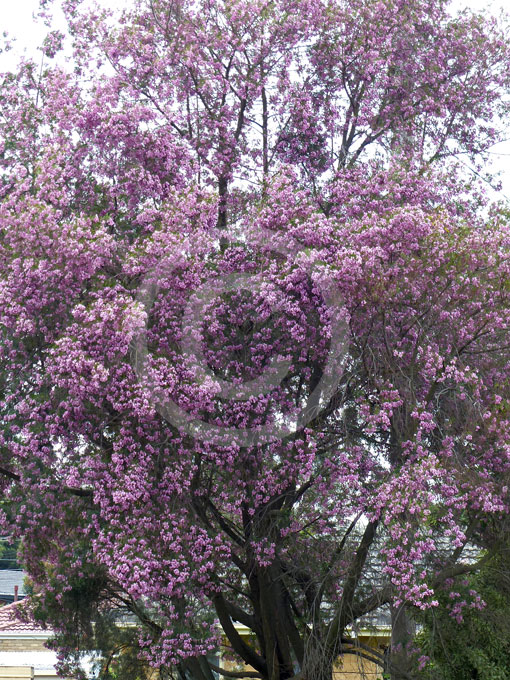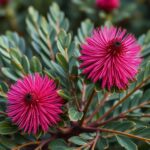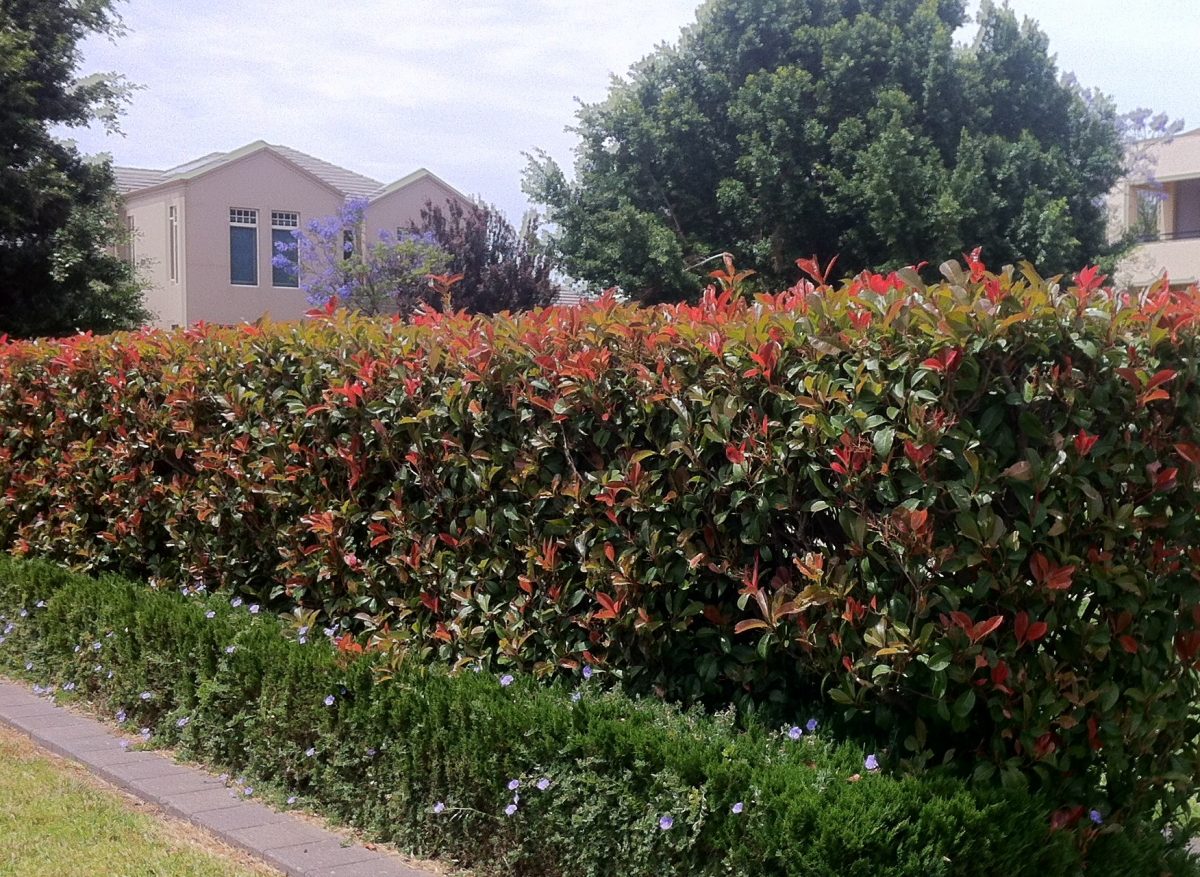Discover the Best Fastest Growing Trees Australia: A Guide for Homeowners and Landscaping Enthusiasts

When it comes to enhancing your outdoor space, selecting the right trees can make all the difference. Fast-growing trees not only provide immediate shade and visual appeal but also contribute to the overall health of your garden. This guide is tailored for homeowners and landscaping enthusiasts looking to discover the best fast-growing trees in Australia. From vibrant flowering varieties to lush evergreens, we’ll explore the top options that thrive in various Australian climates. Whether you're aiming to create a backyard sanctuary or elevate your property’s curb appeal, this guide will help you choose trees that flourish quickly and beautifully.
Fastest Growing Trees in Australia
In Australia, several tree species are renowned for their rapid growth, making them popular choices for landscaping, forestry, and reforestation projects. Among these, the Eucalyptus varieties, particularly the Eucalyptus grandis (Flooded Gum) and Eucalyptus saligna (Sydney Blue Gum), are celebrated for their ability to grow up to 3-4 meters per year under optimal conditions. These trees not only provide quick shade and timber but also play significant roles in improving biodiversity and restoring ecosystems. Other fast-growing species include the Acacia and Albizia genera, which are favored for their quick establishment and ability to thrive in a variety of soil conditions. However, it's crucial to consider factors such as local climate, soil type, and water availability to ensure the best growth performance.
Eucalyptus grandis
The Eucalyptus grandis, commonly known as the Flooded Gum, is one of the fastest growing trees in Australia, capable of reaching heights of up to 60 meters. This tree thrives in subtropical and temperate regions, preferring well-drained soil. It can grow up to 3-4 meters per year, making it an excellent choice for quick shade and timber production. Due to its fast growth, it is often utilized in agroforestry systems and is favored for its ability to regenerate rapidly after disturbances.
Eucalyptus saligna
Eucalyptus saligna, or the Sydney Blue Gum, is another remarkable fast-growing species, known for its impressive height and robust wood quality. This tree can grow at a similar rate of 3-4 meters per year in suitable climates, favoring moist and fertile soils. Its straight trunk and large canopy make it ideal for timber and shade purposes, and it is often planted in urban areas for its aesthetic appeal. Additionally, this species provides habitat for various wildlife, contributing to overall ecological diversity.
Acacia species
The Acacia genus includes several fast-growing species native to Australia, such as Acacia melanoxylon (Blackwood) and Acacia dealbata (Silver Wattle). These trees are known for their ability to fix nitrogen in the soil, enhancing soil fertility. They typically grow between 1-3 meters in height annually and are resilient in various soil types, making them suitable for reforestation and erosion control. Acacia trees also produce beautiful flowers, attracting pollinators, and contribute to the biodiversity of their habitats.
Albizia julibrissin
Albizia julibrissin, commonly referred to as the Silk Tree, is another fast-growing species that can thrive in Australian conditions. This tree is known for its stunning pink, fluffy flowers and fern-like leaves. It can grow rapidly, reaching heights of about 6-12 meters within just a few years. The Silk Tree prefers well-drained soils and full sun, making it an excellent choice for ornamental planting. Additionally, its ability to tolerate drought conditions adds to its appeal for landscaping in arid regions.
Growth Comparison Table
| Tree Species | Growth Rate (meters/year) | Max Height (meters) | Primary Use |
|---|---|---|---|
| Eucalyptus grandis | 3-4 | 60 | Timber, Shade |
| Eucalyptus saligna | 3-4 | 50 | Timber, Ornamental |
| Acacia melanoxylon | 1-3 | 15 | Timber, Erosion Control |
| Albizia julibrissin | 2-3 | 12 | Ornamental, Shade |
What tree has the fastest growth rate?
The tree with the fastest growth rate is generally considered to be the Lombardy poplar (Populus nigra 'Italica'). This tree is known for its rapid vertical growth, reaching heights of 40 to 60 feet (12 to 18 meters) in a relatively short period, sometimes as fast as 6 to 8 feet (1.8 to 2.4 meters) per year under optimal conditions. Its fast growth makes it a popular choice for landscaping and as a windbreak, but it does require well-drained soil and adequate sunlight to thrive effectively.
Characteristics of the Lombardy Poplar
The Lombardy poplar is characterized by a narrow, columnar shape, which makes it ideal for confined spaces in urban areas. Its leaves are typically triangular and a bright green color that turns yellow in autumn. The tree is fast growing due to its strong root system and ability to utilize nutrients and water efficiently.
- Narrow Growth Habit: This tree grows tall and straight, which minimizes the amount of land it requires.
- Attractive Foliage: The leaves add vibrant color to landscapes, especially in the fall.
- Earth-Friendly: It has a good capacity for carbon dioxide absorption, making it beneficial for the environment.
Habitat and Soil Requirements
The Lombardy poplar thrives in a variety of soil types but prefers well-drained, sandy loam soils. It can tolerate drought conditions but grows best with regular watering. In terms of habitat, this tree can adapt to urban settings, making it highly versatile for landscaping needs.
- Soil Drainage: Well-drained soils are crucial for preventing root rot and ensuring healthy growth.
- Pest Resistance: While not immune, this species has moderate resistance to pests compared to others.
- Climate Adaptability: It is adaptable to a range of climates, but it prefers temperate zones.
Uses of the Lombardy Poplar
Due to its rapid growth and tall stature, the Lombardy poplar is often used in various applications. It can provide quick privacy screens, act as effective windbreaks, and serve in reforestation efforts in some regions.
- Privacy Screens: The dense growth helps to obscure views, making it popular for residential properties.
- Windbreaks: Its tall structure helps to reduce wind speeds, protecting smaller plants or structures.
- Reforestation: The rapid growth rate makes it suitable for quickly establishing forest cover.
Cultivation Practices
Growing Lombardy poplars requires certain cultivation practices to ensure optimal growth and longevity. Regular maintenance such as pruning, watering, and monitoring for pests are essential to keep the trees healthy.
See also:
- Regular Pruning: Helps maintain shape and encourages healthy growth.
- Watering Schedule: Adequate watering promotes faster growth during the establishment phase.
- Pest Monitoring: Keeping an eye out for infestations can help prevent damage.
Other Fast-Growing Tree Species
While the Lombardy poplar is the fastest-growing, several other tree species also exhibit rapid growth, making them popular choices for similar purposes. These include the willow (Salix spp.) and the red maple (Acer rubrum).
- Willow Trees: Known for their adaptability and rapid growth, particularly near water sources.
- Red Maple: Grows swiftly and provides stunning fall colors, making it ideal for ornamental planting.
- Silver Maple: Another fast-growing species that is popular for landscaping due to its wide canopy.
What is the tree in a hurry in Australia?

The tree known as the tree in a hurry in Australia is the Eucalyptus fastigata, commonly referred to as the Narrow-leaved Peppermint. This species of eucalyptus is notable for its rapid growth rate, making it an attractive option for timber production and landscaping. It thrives in the wet sclerophyll forests of southeastern Australia, particularly in areas with fertile soil and adequate moisture.
Characteristics of the Tree in a Hurry
The Eucalyptus fastigata has several distinguishing features that contribute to its appeal:
- Rapid Growth: This tree can grow up to 20 meters (approximately 65 feet) tall in just a few years.
- Unique Leaves: Its narrow, lance-shaped leaves provide a distinct look and are often aromatic.
- Bark Texture: The tree has smooth, shedding bark that can range in color from white to grey or cream.
Habitat and Distribution
The natural habitat of the Eucalyptus fastigata is primarily in the moist regions of southeastern Australia:
- Location: Commonly found in New South Wales and Victoria, particularly in wet sclerophyll forests.
- Soil Preference: Prefers well-drained, deep soils that are rich in nutrients.
- Climate: Thrives in areas with higher rainfall and moderate temperatures.
Ecological Importance
The ecological role of Eucalyptus fastigata extends beyond its physical presence:
- Wildlife Habitat: Provides essential habitat for various species, including birds, insects, and marsupials.
- Carbon Sequestration: Its rapid growth makes it effective at absorbing carbon dioxide from the atmosphere.
- Biodiversity Support: The tree contributes to the overall biodiversity of the forest ecosystem.
Uses of the Tree in a Hurry
The Eucalyptus fastigata is valued for multiple uses:
- Timber Production: The hardwood is suitable for construction, furniture, and flooring.
- Landscaping: Often used in gardens and parks for its aesthetic appeal and shade provision.
- Essential Oils: Its leaves can be processed to extract oils used in various products.
Growth and Care
To ensure the best growth conditions for Eucalyptus fastigata, specific care requirements are recommended:
- Watering: Regular watering is crucial, especially during the establishment period.
- Sunlight: Requires full sun exposure for optimal growth and health.
- Pruning: Periodic pruning helps maintain shape and remove any dead or diseased branches.
What is the fastest growing Australian timber?

The fastest growing Australian timber is primarily considered to be Eucalyptus species, particularly Eucalyptus pilularis, commonly known as Blackbutt. This species is renowned for its rapid growth rate, which can reach about 3 to 5 meters per year under optimal conditions. The fast growth makes it an excellent choice for timber production, contributing to both sustainable forestry practices and the economy.
Characteristics of Eucalyptus Pilularis
Eucalyptus pilularis has several defining characteristics that make it ideal for timber. These include:
- Fast Growth Rate: It can grow several meters per year, making it one of the quickest timber trees.
- Durability: The wood is known for its strength and durability, suitable for various construction purposes.
- Adaptability: This species can thrive in many soil types and climate conditions across Australia.
Benefits of Fast-Growing Timber
Choosing fast-growing timber like Eucalyptus offers numerous benefits to both the environment and the economy:
See also:
- Sustainable Forestry: Fast growth contributes to sustainable practices, allowing forests to regenerate rapidly.
- Economic Value: Quick yields of timber can enhance profitability for forestry operations.
- Carbon Sequestration: Fast-growing trees absorb carbon dioxide from the atmosphere, benefiting the environment.
Common Uses of Fast-Growing Timber
Fast-growing timber such as Eucalyptus is utilized in various applications, enhancing its versatility:
- Construction: It is frequently used in residential and commercial buildings for framing and flooring.
- Furniture Making: The wood is also crafted into furniture due to its attractive grain and finish.
- Paper Production: Eucalyptus wood is a significant source of pulp for paper manufacturing.
Environmental Impact of Eucalyptus Forestry
The cultivation of Eucalyptus species has both positive and negative environmental impacts:
- Biodiversity: Planting Eucalyptus can affect local biodiversity, sometimes displacing native flora and fauna.
- Water Usage: Eucalyptus trees can consume large amounts of water, potentially impacting local water tables.
- Carbon Offset: However, they are beneficial in terms of carbon offsetting and promoting healthy forest ecosystems.
Challenges in Fast-Growing Timber Production
While there are many advantages, there are also challenges associated with fast-growing timber production:
- Pest Management: Fast-growing species may be more susceptible to pests and diseases.
- Soil Degradation: Intensive harvesting can lead to soil depletion and erosion.
- Market Fluctuations: The timber market can be volatile, affecting the profitability of fast-growing species.
What is the fastest growing screening plant in Australia?

The fastest growing screening plant in Australia is the Acacia salicina, commonly known as the Willow Wattle. This plant is highly valued for its ability to quickly grow and provide effective screening and privacy solutions in various landscapes. It is a robust, fast-growing native tree that can reach heights of up to 10 meters in just a few years, making it an ideal choice for gardeners and landscapers seeking rapid coverage.
Growth Rate and Characteristics
The growth rate of Acacia salicina is noteworthy, making it one of the fastest options for screening plants.
- It typically grows at a rate of 1 to 3 meters per year, depending on the conditions.
- Its foliage is dense and feathery, providing an excellent physical barrier.
- The bark is smooth and can have a striking appearance, adding aesthetic value to the landscape.
Environmental Adaptability
Acacia salicina shows remarkable adaptability to various environmental conditions, making it suitable for different Australian regions.
- It thrives in both sandy and clay soils, which are common in Australia.
- It can tolerate drought and various waterlogged conditions, making it resilient.
- The plant is also frost tolerant, giving it a wider range of growing conditions.
Ecological Benefits
Beyond its appealing growth rate, Acacia salicina provides various ecological benefits.
- It serves as a habitat for native wildlife, such as birds and insects.
- The plant plays a role in improving soil health, as its roots help stabilize the soil.
- It's an excellent option for erosion control due to its robust root system.
Maintenance Requirements
Maintaining Acacia salicina is relatively straightforward, which contributes to its popularity as a screening option.
- It requires minimal pruning to maintain its desired shape and size.
- Once established, it needs little to no additional watering, which conserves resources.
- Occasional inspections for pests can help ensure the plant remains healthy and vibrant.
Usability in Landscaping
Due to its fast growth and appealing characteristics, Acacia salicina is an effective choice for landscaping projects.
- It can be used as a standalone screening plant or combined with other species for a diverse look.
- Its dense foliage makes it an excellent choice for creating privacy screens in urban areas.
- The plant can be used in windbreaks, making it functional as well as attractive.
Questions from Our Readers
What are the fastest growing trees in Australia?
The fastest growing trees in Australia include species such as the Eucalyptus, Albizia, and Plaque Pine. These trees can grow several meters in just a few years, making them ideal for quick shade and screening solutions in gardens and landscapes.
How much sunlight do fast-growing trees need?
Generally, fast-growing trees thrive in full sunlight, requiring at least 6 to 8 hours of direct sun each day. Ensuring they receive adequate sunlight will promote healthy growth and help them reach their potential height more quickly.
See also:
What is the best time to plant fast-growing trees in Australia?
The optimal time to plant fast-growing trees in Australia is during spring or early autumn when soil temperatures are ideal for root establishment. Avoiding extreme temperatures will aid in successful growth and resilience.
Do fast-growing trees require special care?
Yes, fast-growing trees may require special care, such as regular watering, proper fertilization, and maintenance pruning. Ensuring they are well cared for will enhance their growth rate and longevity in your landscape.

If you want to read more articles like Discover the Best Fastest Growing Trees Australia: A Guide for Homeowners and Landscaping Enthusiasts, we recommend you check out our Landscaping category.
Leave a Reply
Related Articles